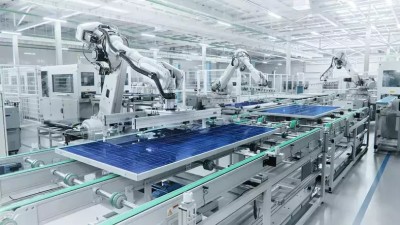The Indian government’s introduction of the Approved List of
Models and Manufacturers (ALMM) for Solar PV Cells, set to take effect on April
1, 2026, marks a significant step in enhancing the country’s solar energy
landscape. This initiative stems from a broader strategy to strengthen domestic
manufacturing capabilities and reduce import dependency, particularly in the
renewable energy sector. By establishing a stringent framework that ensures
only high-quality solar PV cells are allowed into the market, the government
aims to safeguard consumer interests and promote a sustainable energy
ecosystem. This move builds on the success of the ALMM for Solar Modules
introduced in 2019, further solidifying the commitment to fostering a
self-reliant solar industry.
One of the key benefits of the ALMM initiative is its
potential to strengthen the Indian economy. By promoting local manufacturing,
the government is not only encouraging foreign and domestic investments in
advanced manufacturing technologies but also creating a fertile ground for
innovation. This investment is expected to result in job creation across
various sectors, from manufacturing to research and development. As more
companies enter the market, there will be opportunities for skill development
and workforce training, ensuring that the local talent pool is equipped with
the necessary skills to thrive in a rapidly evolving industry.
In terms of energy security, the ALMM initiative plays a
crucial role in enhancing India’s resilience to external shocks. By reducing
dependence on imported solar PV cells, the country can mitigate risks
associated with global supply chain disruptions, geopolitical tensions, or
fluctuations in international prices. This self-sufficiency is particularly
important as India aims to meet its ambitious renewable energy targets,
including achieving 500 GW of non-fossil fuel-based energy capacity by 2030. A
robust domestic manufacturing base will not only support these targets but also
help in stabilizing the energy market by ensuring a consistent supply of solar
components.
Looking ahead, the implementation of the ALMM is poised to
reshape the future of solar energy in India. With improved production
capabilities and quality standards, Indian manufacturers can transition from
being mere consumers of foreign technology to becoming significant players in
the global solar market. This shift is likely to spur innovation in solar
technology, encouraging local firms to develop and patent new products that
meet international standards. As India strengthens its position in the global supply
chain, it can leverage this advantage to export high-quality solar products,
further enhancing its economic standing and creating additional revenue
streams.
The ALMM initiative also opens up numerous opportunities for
entrepreneurship and business development within the renewable energy sector.
As the demand for solar energy continues to rise, there will be an increasing
need for supporting industries, such as logistics, maintenance, and solar
installation services. This ecosystem will facilitate the emergence of startups
and small businesses, driving competition and fostering a culture of
innovation. Moreover, partnerships between established manufacturers and
emerging companies can lead to the sharing of knowledge and resources,
accelerating technological advancements in the industry. Ultimately, the ALMM
initiative represents a comprehensive approach to driving sustainable
development in India.
By focusing on high-quality local manufacturing, the
government not only aims to enhance economic growth and job creation but also
contributes to energy independence and environmental sustainability. As India
seeks to position itself as a global leader in renewable energy, the ALMM
framework serves as a critical foundation for a thriving solar industry,
ensuring that both the economy and the environment benefit in the long run.
This strategic initiative encapsulates a vision for a greener, more self-sufficient
future, aligning with global efforts as climate change and promote sustainable
practices.




